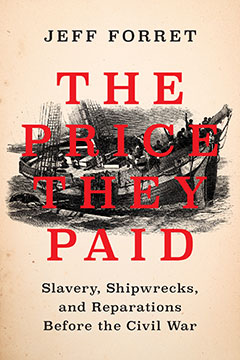The Price They Paid
A prizewinning historian uncovers the first instances of reparations in America—ironically, though perhaps not surprisingly, paid to slaveholders, not former slaves
“A spectacular achievement of historical research. Forret shows for the first time just how far the American government went to secure reparations.” —Robert Elder, author of Calhoun: American Heretic
In 1831, the American ship Comet, carrying 165 enslaved men, women, and children, crashed onto a coral reef near the shore of the Bahamas—then part of the British Empire—where slavery had been outlawed. Shortly afterwards, the Vice Admiralty Court in Nassau, over the outraged objections of the ship’s owners, set the rescued captives free. American slave owners and the companies who insured the liberated human cargoes would spend years lobbying for reparations, not for the emancipated slaves, of course, but for the masters deprived of their human property.
In a work of profoundly relevant research and storytelling, historian and Bancroft Award finalist Jeff Forret uncovers how the Comet—as well as similar episodes that unfolded over the antebellum era—resulted in the first direct slavery reparations payments made by the U.S. government, establishing a precedent that has never been fully explored. The Price They Paid shows how, unlike their former owners and insurers, neither the survivors of the Comet and other vessels, nor their descendants, have ever received reparations for the price they paid in their lives, labor, and suffering during slavery.
Any accounting of reparations today requires a fuller understanding of how the debts of slavery have been paid, and to whom. The Price They Paid represents a major step forward in that effort.


